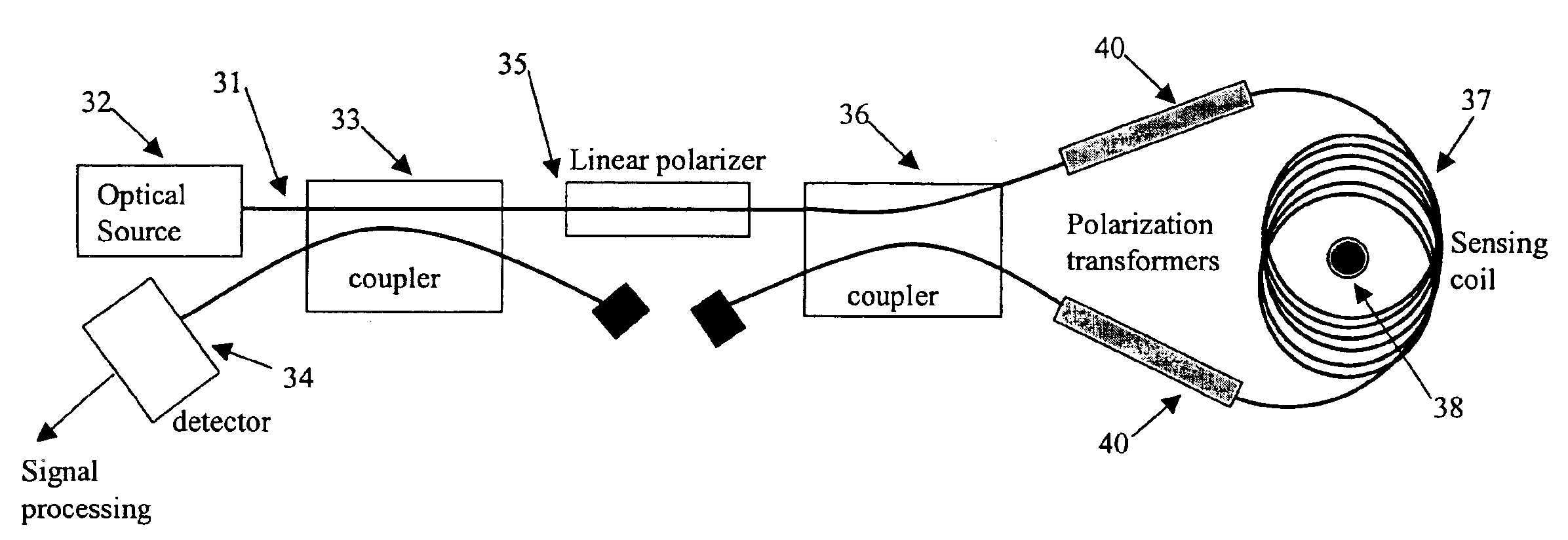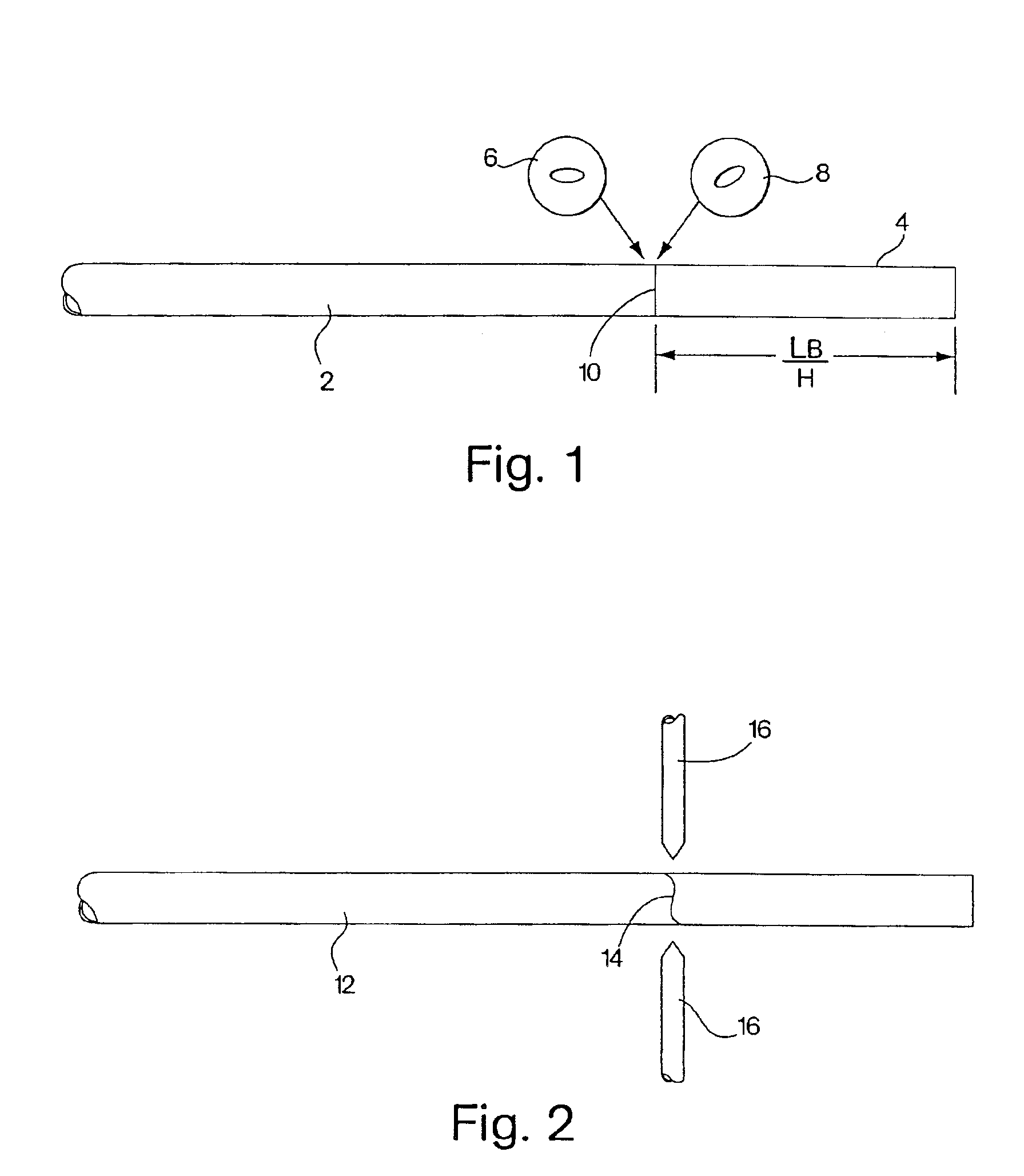Current sensor
a current sensor and sensor technology, applied in the field of current sensors, can solve the problems of complicated and long procedures, and require lots of guesswork
- Summary
- Abstract
- Description
- Claims
- Application Information
AI Technical Summary
Benefits of technology
Problems solved by technology
Method used
Image
Examples
Embodiment Construction
)
[0016]It is often desirable to transform the polarization of a beam of light from one state to another. For this purpose optical devices have been fabricated that input linearly polarized light and output elliptically polarized light. These devices typically function by causing one of two incident linearly polarized light beams to lag behind the other by a pre-selected phase difference. Altering the relative phase of the two incident beams has the effect of changing the state of polarization of the light that exits the optical device. Before considering how these devices of the prior art perform the transformation of linearly to elliptically polarized light and before presenting the detailed description of the preferred embodiment of the present invention, it will be useful to first recall how elliptically polarized light arises.
[0017]Two orthogonal electric fields, Ex and Ey, both propagating in the z direction can be described by the following two equations
Ex=i E0x cos(kz−ωt) (1...
PUM
 Login to View More
Login to View More Abstract
Description
Claims
Application Information
 Login to View More
Login to View More - R&D
- Intellectual Property
- Life Sciences
- Materials
- Tech Scout
- Unparalleled Data Quality
- Higher Quality Content
- 60% Fewer Hallucinations
Browse by: Latest US Patents, China's latest patents, Technical Efficacy Thesaurus, Application Domain, Technology Topic, Popular Technical Reports.
© 2025 PatSnap. All rights reserved.Legal|Privacy policy|Modern Slavery Act Transparency Statement|Sitemap|About US| Contact US: help@patsnap.com



